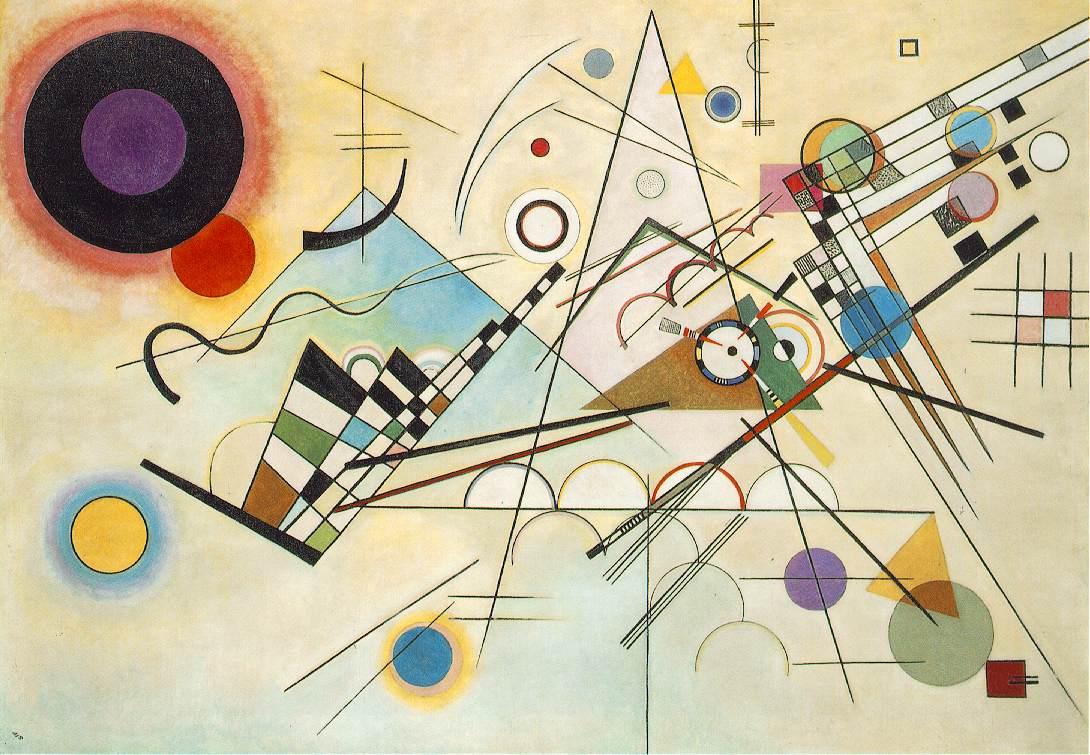Unlike Impressionism, which focused on capturing fleeting light and beauty, Expressionism looked inward—revealing the raw emotions, anxieties, and spiritual visions of the artist. Emerging in the early 20th century, Expressionism rejected realism in favor of distortion, bold colors, and dramatic forms.
Two artists defined its rise: Edvard Munch, whose haunting masterpiece The Scream became an icon of modern anxiety, and Wassily Kandinsky, often considered the first true abstract painter, who saw art as a spiritual language of color and form.
In this article, we’ll explore the origins of Expressionism, highlight the work of Munch and Kandinsky, and show how you can bring this powerful movement into your home with museum-quality reproductions.
The Origins of Expressionism
Breaking Away from Tradition
Expressionism developed in Germany around 1905, when groups like Die Brücke (“The Bridge”) and later Der Blaue Reiter (“The Blue Rider”) formed to challenge academic art traditions.
Instead of painting what they saw, Expressionist artists painted what they felt—often emotions of fear, joy, or inner conflict.
Characteristics of Expressionist Art
-
Bold Colors: Emotional intensity rather than realistic tones.
-
Distortion: Forms exaggerated to heighten feeling.
-
Symbolism: Hidden meanings and psychological depth.
-
Spiritual Influence: Especially in Kandinsky’s work, which saw art as a form of universal language.
Edvard Munch: The Painter of Anxiety
Edvard Munch (1863–1944) was a Norwegian artist whose works explored love, death, and psychological struggle.
Known For
-
The Scream (1893) — a symbol of modern existential dread.
-
The Madonna (1894–1895) — blending sensuality and spirituality.
-
The Dance of Life (1899–1900) — reflecting stages of love and relationships.
The Scream: A Universal Symbol
Few works in art history are as instantly recognizable as The Scream. With its swirling sky and distorted figure, it captures raw human anxiety. Munch described the inspiration: “I felt a great scream pass through nature.”
Munch’s Influence
Munch’s emotional intensity paved the way for Expressionism. His works influenced German artists and continue to resonate in popular culture today.
Wassily Kandinsky: The Father of Abstract Art
Wassily Kandinsky (1866–1944), a Russian-born painter, believed that art should express the inner spiritual necessityof the artist.
Known For
-
Composition VII (1913) — considered one of the greatest abstract works.
-
Improvisation 28 (1912) — bold color fields and energetic forms.
-
The Blue Rider (1903) — both a painting and the name of his artist group.
Kandinsky’s Vision
Kandinsky saw art as more than visual—it was musical. He believed colors and shapes could evoke emotions just like sounds. His theories were groundbreaking, outlined in his book Concerning the Spiritual in Art (1911).
The First Abstract Painter
While others experimented with abstraction, Kandinsky is widely considered the first to fully commit, moving beyond recognizable forms into pure expression of inner life.
Expressionism’s Impact on Modern Art
Expressionism influenced countless later movements, including:
-
Abstract Expressionism: Jackson Pollock, Mark Rothko, and others built on its emotional intensity.
-
Film & Theater: German Expressionist cinema (e.g., The Cabinet of Dr. Caligari) shaped horror and film noir.
-
Contemporary Culture: Expressionist themes of anxiety, distortion, and bold color remain visible in modern design.
Why Expressionist Reproductions Are Popular
-
Emotional Connection: Expressionist works speak directly to human feelings.
-
Bold Aesthetics: Their colors and forms add drama to interiors.
-
Cultural Icons: Works like Munch’s The Scream are instantly recognizable.
Styling Expressionist Reproductions
-
Living Rooms: Make The Scream a striking conversation piece.
-
Offices/Studies: Kandinsky’s abstract compositions inspire creativity.
-
Modern Spaces: Expressionist art pairs well with minimalist furniture, allowing color to dominate.
Hand-Painted vs Prints
While prints flatten Expressionism, hand-painted reproductions restore:
-
Thick brushwork and textures
-
Vibrant, layered color fields
-
The expressive energy of the original
At Blue Surf Art, every reproduction is hand-painted in oils, ensuring museum-quality accuracy and depth.
Why Blue Surf Art?
We specialize in Expressionist reproductions, including Munch and Kandinsky, hand-painted on canvas with precision. With custom sizes, rolled or stretched options, and worldwide shipping, our reproductions make owning Expressionist masterpieces accessible.
FAQs About Expressionism
Q: What is Expressionism in simple terms?
A: Art that expresses feelings rather than realistic appearances.
Q: Who started Expressionism?
A: Groups like Die Brücke in Germany, influenced by Munch’s early works.
Q: Why is Kandinsky important?
A: He pioneered abstract art and believed colors/shapes carry emotional meaning.
Q: Where can I see Expressionist art today?
A: Major collections include MoMA (New York), Neue Galerie (New York), and National Gallery (Oslo).
Final Thoughts
Expressionism is not about how the world looks, but how it feels. Through Munch’s haunting visions and Kandinsky’s spiritual abstractions, Expressionism continues to challenge, inspire, and move us.
Owning a hand-painted reproduction means you don’t just hang a painting—you invite powerful emotion and history into your space.
✨ Explore our Expressionist Reproductions Collection and experience the passion of Munch, Kandinsky, and modern masters.

Share:
Monet’s Water Lilies: Story, Symbolism & Reproduction Guide
Gustav Klimt’s The Kiss: Story, Symbolism & Reproduction Guide